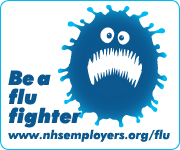Needlestick/contamination injury
The term 'Needlestick Injury' is another way to describe a
sharps injury.
What are sharps?
Sharps include:
- needles
- scalpel blades
- stitch cutters
- syringes
- disposable scissors
- IV cannulae-introducers
- giving sets attached to fluid bags
- blood glucose lancets
- butterfly needles
Who is at risk from sharps injuries?
Patients, staff and visitors may all be at risk in
ward/department areas, where sharps are used. However, nurses and
medical personnel tend to be at most risk (Royal College of Nursing
/Infection Control Nurses Association).
What is the extent of the problem?
- Nurses receive the most injuries
- Sharps cause most problems
- Injuries most commonly occur on wards and in theatre
- Injuries tend to occur during the use of the item/after use but
before disposal/putting in the sharps bin
Need to know what to do following a needlestick injury?
First aid...
- Stop what you are doing
- Dispose of sharp immediately
- Wash wound with soap and warm water (do not use antiseptics
etc.)
- Encourage bleeding if appropriate
- Cover with plaster/dressing to prevent bleeding onto
clothes/clinical area
- Complete an incident form at the time of incident
THEN
Ring the Occupational Health Needlestick Hotline on: 0117
342 3400 immediately
.
Further information can be found here:
| Advice |
Avon Partnership NHS Occupational Health Service 0117
342 3400
|
| Infection control |
UH Bristol Infection Control Team 0117 342 3868 Bleep 3543
|
| Health and safety issues |
UH Bristol Health & Safety 0117 342 0136
|
| Sharps bin availability |
Hotel Services 0117 342 2773
|
| Sharps bin range |
Daniels Healthcare Ltd 01142 826 881 (http://www.daniels.co.uk/)
|